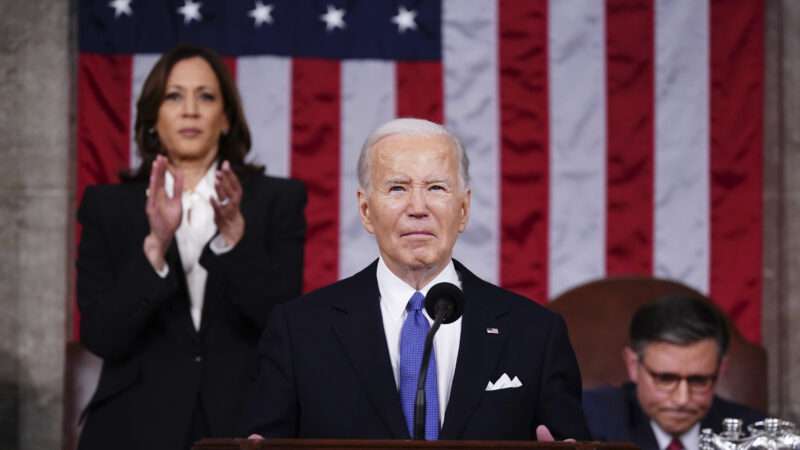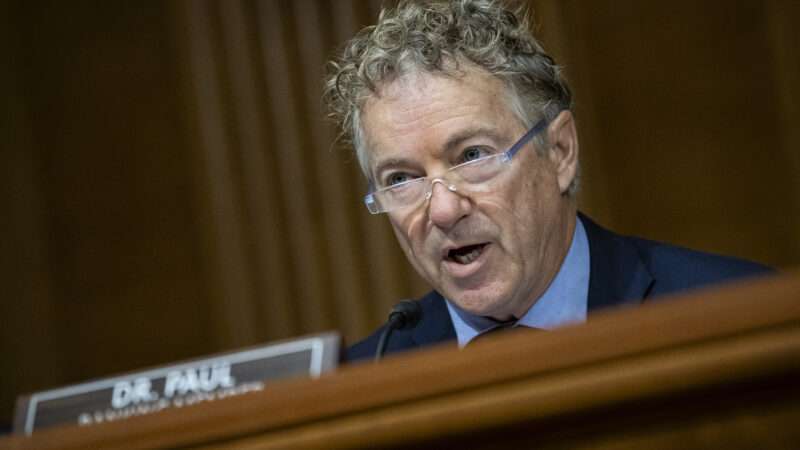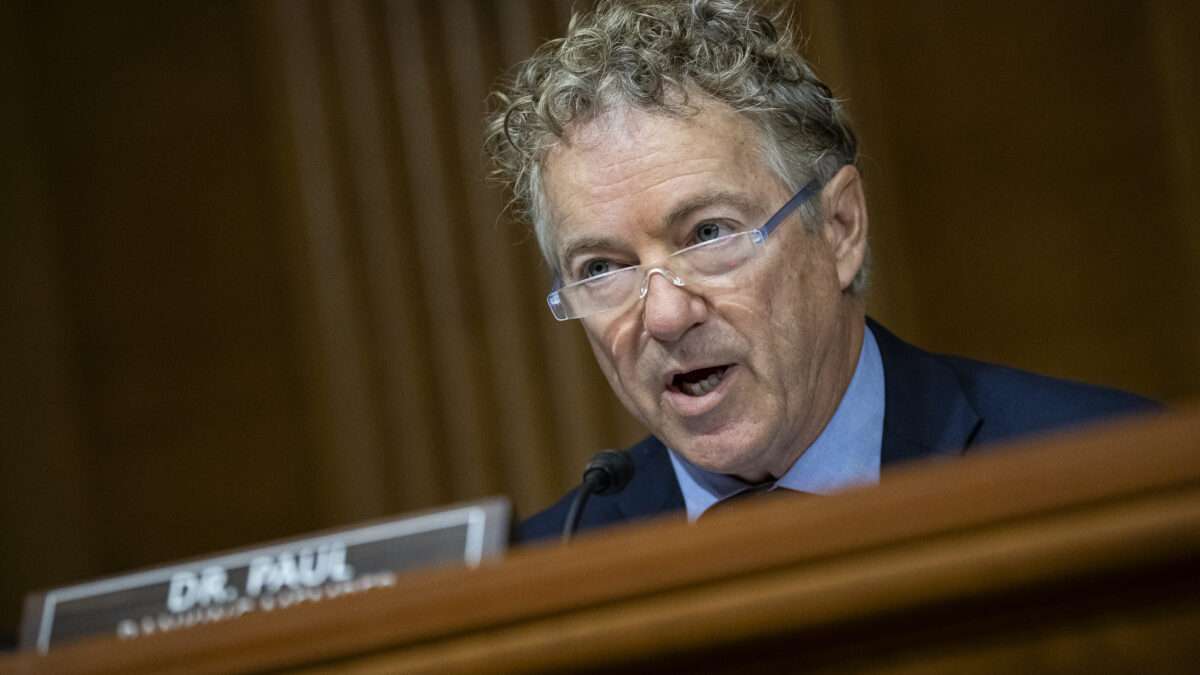Code Games

Happy Tuesday and welcome to another edition of Rent Free. This week's stories include:
- A federal appeals court slaps down the federal government's odd argument that it doesn't have to compensate landlords for its eviction moratorium because the moratorium was illegal.
- Vice President Kamala Harris sets a first-term goal of building 3 million middle-class homes.
- A Michigan judge sides with property owners trying to build a "green cemetery."
But first, a look at an under-the-radar federal regulation change that might make it easier for builders to create more small multifamily "missing middle" homes.
Code Games
In his 1942 book Capitalism, Socialism, and Democracy Joseph Schumpeter praised capitalist mass production for bringing almost every basic commodity, from food to clothing, within the affordable reach of the working man. The one exception he highlighted was housing, which he confidently predicted would soon see a similar collapse in prices due to mass-produced manufactured housing.
As it happens, manufactured housing production—which is built in factories and then shipped and installed on-site—peaked in the mid-1970s and has been limping along as a small share of overall home construction ever since.
Nevertheless, the dream that cheap, factory-built homes can deliver lower-cost housing has never died.
It's certainly alive and well in the current White House.
This past week, the Biden-Harris administration released a "fact sheet" of actions it was taking to lower housing costs. It included an in-progress regulatory change that would allow two-, three-, and four-unit homes to be built under the federal manufactured housing code set by the U.S. Department of Housing and Urban Development (HUD).
"The HUD Code creates economies of scale for manufacturers, resulting in significantly lower costs for buyers," says the White House in that fact sheet. Letting small multifamily housing be built under the HUD code will extend "the cost-saving benefits of manufactured housing to denser urban and suburban infill contexts," it says.
IRC, IBC, IDK
The proposed change comes at an interesting time for small multifamily housing construction.
Across the country, more and more states and localities are allowing more two-, three-, and four-unit homes to be built in formerly single-family-only areas.
That liberalization of the zoning code (which regulates what types of buildings can be built where) has set off a follow-on debate about which building code (which regulates construction standards) newly legal multiplexes should be regulated under.
Currently, the options are either the International Building Code (IBC) or the International Residential Code (IRC).
The IBC and IRC are model codes created by the non-profit International Code Council, which are then adopted (often with tweaks and changes) by states and localities.
The IBC typically covers apartment buildings of three or more units, while the IRC covers single-family homes. Neither is particularly well-suited for the regulation of smaller multi-family buildings that cities are now legalizing.
The IBC, for instance, requires expensive sprinkler systems that don't do much to improve fire safety in smaller buildings but can make their construction cost-prohibitive.
Zoning reformers have responded by trying to shift the regulation of smaller apartments into the IRC. But that raises its own problems, says Stephen Smith of the Center for Building in North America.
"It's a complicated thing to do because the IRC is not written for small multi-family. It's written for detached single-family," he says. "For traditional apartment buildings with a single entrance and stairs and halls and stuff, it's not really clear how the IRC would work with that."
The White House's proposed changes open the possibility of sidestepping this IRC-IBC dilemma entirely by letting builders of manufactured, multifamily housing opt into a single, national set of regulations.
A Floor or a Ceiling?
The question then is whether this will actually make life easier for builders.
The effect of HUD regulation on the production of single-family manufactured housing is a topic of intense debate.
Prior to the 1970s, manufactured housing was governed by a patchwork of state and local building codes. In 1974 Congress passed legislation that gives HUD the power to regulate manufactured housing.
Critics of HUD regulation argue that its initial implementation caused the steep decline in manufactured housing production in the 1970s.
In particular, they point to the HUD requirement that manufactured housing must sit on a steel chassis as a regulation that increases costs and decreases production.
Brian Potter, a senior fellow at the Institute for Progress and writer of the Construction Physics Substack, contrastingly argues that HUD regulation has actually helped keep the cost of building manufactured housing down.
The production of all housing, not just manufactured housing, plummeted in the 1970s, he notes. Since the 1970s, the costs of non-manufactured, site-built housing have skyrocketed while the costs of building manufactured housing have risen much less, he points out. Potter argues that the effect of the steel chassis requirement is also overstated.
To this day, manufactured housing is the cheapest type of housing to produce when comparing smaller manufactured housing units to smaller site-built single-family housing units. The HUD code has less expensive requirements and allows builders more flexibility in the construction of units.
"The most interesting and attractive thing about the HUD code is that HUD code homes tend to be much, much less expensive than single-family homes," says Potter.
The hope is that allowing newly legal duplexes, triplexes, and fourplexes to be built under HUD standards would reduce costs compared to building them under IBC or IRC regulations.
Degrees of Change
While the HUD code has been in existence since the 1970s, its explicit exclusion of manufactured, multifamily housing is a relatively recent development. In 2014, HUD issued a memorandum saying that only single-family housing can be built under the department's manufactured housing standards.
In a 2022 public comment on the proposed updates, the Manufactured Housing Association for Regulatory Reform argues that the 2014 memorandum was in error and that HUD actually has no regulatory authority to cap the number of units that can be built under the code.
According to the White House fact sheet, the Biden administration's proposed updates to the HUD code would once again allow up to four units of housing to be built under the code once again.
If the HUD code critics are correct, then this will make a minimal difference. Under this theory, builders would just have another cost-increasing building code to choose from. If folks like Potter are correct, however, this should allow builders to opt into less demanding regulations. We might therefore see an increase in the number of two-, three-, and four-unit homes built.
Building code liberalization will still only be effective in places where zoning code liberalization has already happened. Cities and states still have every power to zone out multifamily housing and ban the placement of manufactured housing.
Where cities have made those "missing middle" reforms, however, it's possible the White House's proposed regulatory changes will increase the production of manufactured, multifamily housing while policymakers figure out whether how to change the IBC or IRC to allow more site-built multiplexes.
If the CDC's Eviction Moratorium Was Illegal, Do the Feds Have To Pay for It?
When the Centers for Disease Control and Prevention (CDC) banned residential evictions for non-payment of rent in 2020, property owners responded with a flurry of lawsuits, arguing that the federal government owed them compensation for what amounted to a physical taking of their property.
While those lawsuits were ongoing, the U.S. Supreme Court ruled in August 2021 that the CDC moratorium was an illegal overstepping of the agency's authority.
This armed the federal government with an audacious response to all those property owners' claims for compensation: Because the CDC's eviction moratorium was illegal and lacked federal authorization, the federal government wasn't required to pay any compensation.
Incredibly, the Court of Federal Claims agreed with this argument—citing past cases that immunized the government from having to pay compensation for clearly illegal, unsanctioned acts of its agents—and dismissed a property owners' lawsuit in the case of Darby Development Co. v. United States.
But this past week, the United States Court of Appeals for the Federal Circuit sided with property owners and reversed that dismal.
The appeals court ruled that the CDC eviction moratorium, while illegal, clearly did have the endorsement of both Congress and the executive branch.
"Taken to its logical conclusion, [the government's] position is that government agents can physically occupy private property for public use, resist for months the owner's legal attempts to make them leave, and then, when finally made to leave, say they need not pay for their stay because they had no business being there in the first place," wrote Judge Armando O. Bonilla in an opinion issued earlier this month.
The case is now remanded back to the federal claims court.
"The government should not be able to hide behind its own illegality to avoid paying damages for that very illegality," Greg Dolin, a senior litigation counsel at the New Civil Liberties Alliance (which filed an amicus brief in the Darby case) told Reason.
Kamala Harris, Supply Sider?
In a speech this past Friday laying out her economic agenda, Vice President and Democratic presidential candidate Kamala Harris criticized state and local restrictions on homebuilding for driving up prices.
"There's a serious housing shortage in many places. It's too difficult to build, and it's driving prices up. As president, I will work in partnership with industry to build the housing we need, both to rent and to buy. We will take down barriers and cut red tape, including at the state and local levels," said Harris, promising to deliver 3 million units of housing that's affordable to middle-class families by the end of her first term.
It's always refreshing to hear a politician accurately diagnose the cause of America's high housing costs as a matter of restricted supply. It's even better when politicians promise to do something about those supply restrictions. Harris' remarks are rhetorically a lot better than the explicit NIMBYism coming from Republican presidential contender Donald Trump.
Nevertheless, Harris' actual housing policies, including downpayment subsidies and rent control, will only make the problem worse. Downpayment subsidies will drive up demand and prices while leaving supply restrictions in place. Rent control has a long, long record of reducing the quality and quantity of housing.
Harris' speech was also peppered with lines attacking institutional housing investors who are providing much-needed capital for housing production.
Town's Ban on 'Green Cemetery' Is Dead
If the government doesn't like your cemetery, can it just ban all cemeteries? The answer, at least in Michigan, is no, no it can't.
In the case of Quakenbush et al v. Brooks Township et al, a state circuit court judge sided with a married couple who'd sued their local government when it passed a ban on new cemeteries with an eye toward stopping their development of the state's first "conservation burial forest."
"We're excited and feel vindicated by this ruling. We are delighted that the judge understood that Brooks Township's ordinance violated our right to use our property," said Peter and Annica Quakenbush, the plaintiffs in the case. They were represented by the Institute for Justice.
Quick Links
- Jim Burling, the Pacific Legal Foundation's vice president of legal affairs, has a new book Nowhere to Live covering the legal history of zoning in America, the courts' acquiescence to this restriction on property rights, and all the attendant consequences of high housing costs and homelessness that have flowed from it.
- A new paper published on SSRN estimates that a 25 percent reduction in permitting times in Los Angeles leads to a 33 percent increase in housing production.
- Calmatters covers the killing, or severe injuring, of various bills introduced in the California Legislature this year that aimed to pair back the California Coastal Commission's powers to shoot down new housing production. Read Reason's past coverage of the Coastal Commission here and here.
- Hawaii has legalized accessory dwelling units statewide, but they haven't made building them easy.
- If you build it, prices drop.
*UPDATED* (and still true)
When you build "luxury" new apartments in big numbers, the influx of supply puts downward pressure on rents at all price points -- even in the lowest-priced Class C rentals. Here's evidence of that happening right now:
There are 21 U.S. markets where… pic.twitter.com/BF9GY0YiFY
— Jay Parsons (@jayparsons) August 13, 2024
The post Code Games appeared first on Reason.com.






















